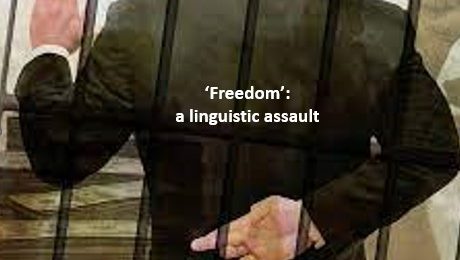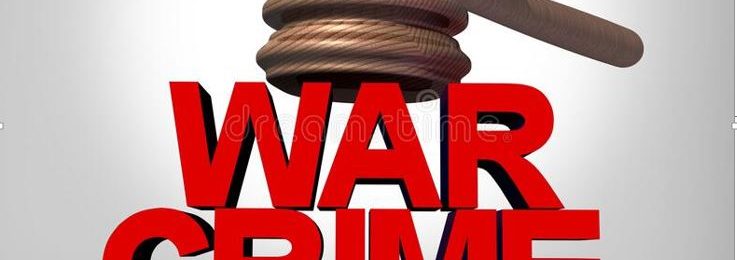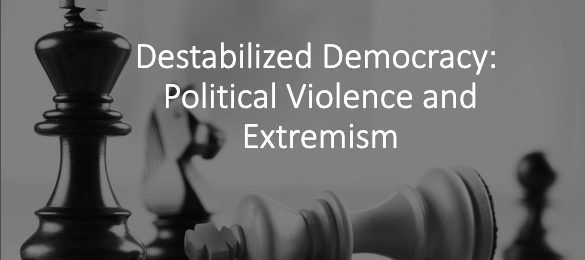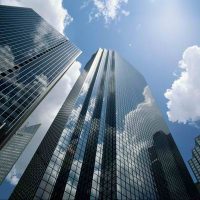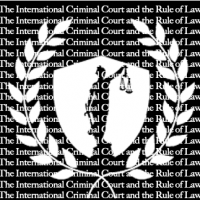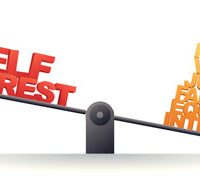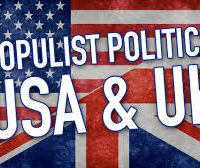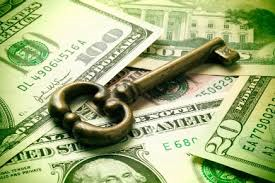
https://arkipel.org/buy-ambien-cr-online https://www.ag23.net/buy-ambien-online-europe
https://forumlenteng.org/purchasing-ambien-in-mexico Global inequality is growing. The richest 1% of the world’s population now own 50% of its total wealth in U.S. dollars, according to an October 2015 Global Wealth Report by Credit Suisse.[1]
https://starbrighttraininginstitute.com/ambien-buy-cheap-online Oxfam International reported in January 2016 that 62 individuals have the same wealth as the poorest 3.6 billion people in the world. The World Bank reports that more than a billion people live in extreme poverty, which is defined at living off $1.90 per day.[2]
The 2015 Global Wealth Report states that its focus is “middle class wealth”, and that “in providing the full picture, the report has grown to an indispensable source to scholars, policymakers, and corporate decision makers alike”.
https://medcardnow.com/order-zolpidem-uk Worldwide Data
https://creightondev.com/2024/06/24/ambien-prescriptions-online The bank’s Global Wealth Report notes that worldwide, there are 34 million people who have a U.S. dollar net worth of at least $1 million, or 0.7% of the global adult population. This accounts for 45% of global wealth. If the bracket is extended to include people with less than $1 million, but still within the top 1% ($760,000-$770,000 net worth), the total wealth crosses the key 50% line.[3]
https://makeitagarden.com/ambien-sale-online-cheap Including the 1%, 383 million people (8% of the world’s adult population) has wealth of more than $100,000.
https://www.club-italia.com/2024/06/buy-zolpidem-uk 1 billion people (21% of the population) have a net worth between $10,000 to $100,000.
At the base of the global wealth pyramid are 3.4 billion people (71% of the world’s adult population) with a net worth of less than $10,000.
Order Ambien Online Is It Legal
https://www.ag23.net/can-i-buy-ambien-in-mexico
Can You Buy Ambien Online Legally Zolpidem Online Uk Canadian and US Data
Zolpidem Online Overnight Delivery In Canada, 984,000 people are millionaires with a U.S. dollar net worth of at least $1 million, and a total of 1.5 million people are in the top 1% in terms of global wealth holders (having at least $760,000).
https://starbrighttraininginstitute.com/buy-zolpidem-sleeping-pills The Global Wealth Report notes that Canadians represent 3% of the world’s top 1% of global wealth holders, while only having 0.6% of the world’s adult population.
Nine other countries have at least 1% of global millionaires led by Germany, China, Italy, Canada and Australia, “with shares of 3-5% each”. The report notes that the United States (a) “has by far the greatest number of members of the top 1% global wealth group”, (b) “has by far the greatest number of millionaires, 15.7 million, or 46% of the worldwide total”, and (c) has “six times” the number of people “with wealth above US $50 million” than “the next country, China”.
The Credit Suisse Global Wealth Report calculates Wealth distribution internally within Canada is as follows:
- $1 million plus – 3.6%
- $100,000 to $1 million – 46.1%
- $10,000 to $100,000 – 31.9%
- $10,000 or less – 18.5%
https://www.club-italia.com/2024/06/zolpidem-mastercard The three authors of the Global Wealth Report include Jim Davies, a Professor in the Department of Economics at the University of Western Ontario in Canada.
https://medcardnow.com/buy-zolpidem-er-12-5-mg 1,334,930 Canadian children (19%, or one in five children) live in poverty.
According to another report – 2015 Report Card on Child and Family Poverty in Canada – 1,334,930 Canadian children (19%, or one in five children) live in poverty. According to UNICEF’s latest report on child well-being, Canada stands 17th out of a total of 29 nations using five measures: material well-being; health and safety; education behaviours and risks; housing; and the environment.[4]
https://arkipel.org/ambien-sleeping-tablets-online In addition to the United States, nine other countries have at least 1% of the global millionaires led by Germany, China, Italy, Canada and Australia, “with shares of 3-5% each”.
https://starbrighttraininginstitute.com/ambien-purchase The US has by far the greatest number of millionaires, 15.7 million, or 46% of the worldwide total.
https://exitoffroad.com/purchasing-ambien-in-mexico The Global Wealth Report notes that the United States (a) “has by far the greatest number of members of the top 1% global wealth group”, (b) “has by far the greatest number of millionaires, 15.7 million, or 46% of the worldwide total”, and (c) has “six times” the number of people “with wealth above US $50 million” than “the next country, China”.
https://creightondev.com/2024/06/24/order-zolpidem-uk More than 16 million children (22% of all children, or just more than one in five) live in families with incomes below the federal poverty level.
In the US, more than 16 million children (22% of all children, or just more than one in five) live in families with incomes below the federal poverty level. 45% of children live in low-income families. Poverty is recognized to impede children’s ability to learn, and contributes to social, emotional, behavioural, and physical and mental health problems.[5]
https://vita.com.bo/zolpidem-buy Middle-class Data
https://www.magiciansgallery.com/2024/06/ambien-sale-online-cheap The Global Wealth Report specifically states that its analysis of the middle classes, is defined by personal wealth rather than profession. The reason for the definition is stated as follows:
“The middle-class category is not easy to define. At one time the label was usually attached to households whose head was a professional or a manager, or who worked in a skilled white collar or blue collar job. More recently, it has become common to define the middle class in terms of a range of household income which offers a comfortable lifestyle, but not an overly generous one; in other words a range which excludes the poor and those vulnerable to poverty at the bottom end, but also those at the top with the highest incomes. We proceed here in a similar vein, but break new ground by defining the middle class in terms of a wealth band rather than an income range. This has many attractions: the values and aspirations of the middle class have always been linked to ownership of property, which gives them a stake in the future of the country and the freedom to view issues from a longer-term perspective. Furthermore, access to modest amounts of assets allows households to tide themselves over when misfortune strikes; in other words, it ensures less vulnerability to spells of poverty.
An income-based definition of the middle class misses these elements of freedom and security. It suggests, for example, that a spell of unemployment can cause middle-class status to evaporate. A wealth based definition, on the other hand, conforms better to the widespread view that middle-class membership is resilient to temporary setbacks.”
https://exitoffroad.com/buy-zolpidem-online-paypal The Global Wealth Report chose the United States as the benchmark country, defining a middle class adult as having wealth between US $50,000-$500,000 of assets. For other countries, the IMF series of purchasing power parity (PPP) values was used to derive equivalent middle-class wealth bounds in local purchasing power terms. For example, in Switzerland the initial threshold would be US $72,000, and for China it would be US $28,000. For each country, the upper limit of middle-class wealth is 10 times the lower limit.
https://arkipel.org/can-i-buy-ambien-online The report states that 664 million people (14% of the world’s adult population) belong to the global middle-class in 2015, holding 32% of the global wealth. 96 million people (2% of the world’s adult population) have wealth over the upper limit of the report’s middle-class wealth range, holding 60% of the total wealth.
https://forumlenteng.org/cheap-ambien-from-canada Across regions, the report states that middle class is most prevalent in North America (39%), followed by Europe (33%), Asia-Pacific (15%), China (11%), Latin America (11%), Africa (3%) and India (3%).
The Global Wealth Report notes that “[t]he size and wealth of the middle class varies greatly across countries, ranging from 3% of the adult population in India to 66% of adults in Australia. Surprisingly, only 38% of adults in the United States qualify as middle class according to our criterion, a much lower percentage than the 50% to 60% figure found in most high-income countries. The reason for this lies in high wealth inequality in the United States.”
Reasons for Wealth Differences & Impact on Economy and Society
https://www.magiciansgallery.com/2024/06/ambien-purchase The Global Wealth Report states that there are many reasons for the wealth differences observed across individuals. Some of those with low wealth are young and will have had little opportunity to accumulate assets. Others may have suffered business losses or personal misfortune, or may live in countries or regions where prospects for wealth creation are limited. Opportunities are also constrained for women or minorities in some countries. At the other end of the spectrum are individuals who are referenced to have acquired large fortunes through talent, hard work and/or good luck.
On the other hand, Chris Matthews, a financial journalist, discussed the work of economists Emmanuel Saez and Gabriel Zucman, noting that “the drastic rise in wealth inequality has occurred for the same reasons as income inequality; namely, the trend of making taxes less progressive since the 1970s, and a changing job market that has forced many blue collar workers to compete with cheaper labor abroad. But wealth inequality specifically is affected by a lack of saving by the middle class. Stagnant wage growth makes it difficult for middle and lower class workers to set aside money, but Saez and Zucman argue that the trend could also be a product of the ease at which people are able to get into debt, writing: ‘Financial deregulation may have expanded borrowing opportunities (through consumer credit, home equity loans, subprime mortgages) and in some cases might have left consumers insufficiently protected against some forms of predatory lending. In that case, greater consumer protection and financial regulation could help increasing middle-class saving. Tuition increases may have increased student loans, in which case limits to university tuition fees may have a role to play.’”[6]
Zolpidem Buyers At least one journalist, reviewing the Global Wealth Report, noted the following with respect to wealth differentiation and inequality: “Never have the rich increased their wealth so quickly as in America since the financial crash of 2008. But side by side with the amassing of previously unthinkable private fortunes, the infrastructure of America is crumbling, education, health care and other social services are starved of funding, and the living standards of the vast majority of the population, the working people who produce the wealth, are declining.”[7]
https://medcardnow.com/ambien-cr-online-india Poverty is recognized to impede children’s ability to learn, and contributes to social, emotional, behavioural, and physical and mental health problems.[8]
With inequality there has been social protest. The Occupy movement is the international branch of the Occupy Wall Street movement that proposes nonviolent civil disobedience to protest against social and economic inequality around the world. “The 99%” phrase is a political slogan used by the Occupy movement to highlight the inequality enjoyed by the 1% financial elite to the detriment of society. The primary goal of the Occupy movement is to appropriately transform the current economic and political dealings within all societies to a less vertical hierarchy. A key concern for the movement is how large corporations (and the global financial system) appear to control the world in a way that disproportionately benefits an elite financial minority, undermining democracy through corporate money and lobbyists. The first Occupy protest to receive widespread attention was the September 2011 Occupy Wall Street in New York. By October of that year, Occupy protests had expanded to over 82 other countries, including Canada.[9]
https://habitaccion.com/ambien-online-paypal https://habitaccion.com/best-price-ambien-online Public Policy in Canada
The question then, is “why should we care that wealth inequality is so much greater than even the historic levels of income inequality?”. The growth of “income inequality has long been a hot topic around the globe” but it is only recently that “the amount of wealth concentrated in the top one percent” has become a trending topic.[10] The reason:
- An income of $32,400 a year is sufficient to meet the top 1% worldwide threshold. This is not likely to be perceived as rich from an American or Canadian standard, even though it may be by global standards. The average wage for an “accountant, a registered nurse or even an elementary school teacher” would likely exceed this 1% level in Canada.
- With respect to wealth however, the threshold to join the “1% club” is significantly higher (approximately $760,000 to $770,000), and more importantly from a policy perspective, 62 individuals have the same wealth as the combined poorest 3.6 billion people in the world.
A key reason for the difference between wealth inequality and income inequality is the increasing return in our world economy for capital versus labour.
https://www.magiciansgallery.com/2024/06/buy-zolpidem-online-europe While inequality may be a natural result of competitive economies, there’s evidence that shows that extreme levels of inequality is bad for the economy. Unless a business caters to the richest of the rich, most citizens are impacted in their ability to purchase goods, impacting many business’ opportunities for real growth.
Furthermore, there’s reason to believe that such levels of inequality has negative social consequences. “The link is well documented between poverty and poor health, low education outcomes, substance abuse, family violence and other costly social ills.[11] The late historian Tony Judt’s (January 2, 1948 – August 6, 2010) discussed the consequences on a society as follows:
https://vita.com.bo/zolpidem-buyers “There has been a collapse in intergenerational mobility: in contrast to their parents and grandparents, children today in the UK as in the US have very little expectation of improving upon the condition into which they were born. The poor stay poor. Economic disadvantage for the overwhelming majority translates into ill health, missed educational opportunity, and—increasingly—the familiar symptoms of depression: alcoholism, obesity, gambling, and minor criminality.”
Canada is not immune. Whether the UK, US or Canada, evidence unfortunately supports that “rising inequality and many other intractable social problems are related. Not only is rising inequality bad for [the economy], it is [also] bad for society”.[12]
Unfortunately, if correct, Oxfam International has identified that “multinational companies and wealthy elites are playing by different rules to everyone else” – for example “refusing to pay the taxes that society needs to function” – noting that the “economic system is heavily skewed in their (the wealthiest) favour, and arguably increasingly so”.[13]
It appears to some commentators that “the ultra-rich wield their wealth to maintain a stranglehold on power while simultaneously hiding from the taxman”.[14] In this respect, in Canada a recent CBC news investigation seems to suggest that the wealthy may be able to obtain assistance from former senior tax enforcers who are hired directly by KPMG Canada (one of Canada’s most respected accounting firms) into its “upper echelons”. CBC’s investigation seems to indicate that these senior government personnel are hired from the same Canadian Revenue Agency that is investigating KPMG’s alleged “deceptive offshore ‘sham’ to help wealthy clients avoid tax”.[15] The CBC investigation appears to raise the question as to why “the Canada Revenue Agency offered amnesty to multi-millionaire clients caught using what’s been called an offshore tax ‘sham’ on the Isle of Man – a reprieve that was supposed to remain secret and out of the public eye until it was uncovered by the CBC News” investigative reporters.[16] It should be noted that none of CBC’s reported allegations have been proven in Court, and KPMG denies the allegations.
From a public policy perspective, this continuing and “rising inequality is a problem for all of us.
https://forumlenteng.org/buy-ambien-overnight-delivery The Organization for Economic Cooperation and Development notes that increasing income inequality” not only poses a risk for social cohesion, but “threatens to slow down the current economic recovery” impacting socio-economic outcomes for everyone in our society and worldwide. According to some tax commentators, “ordinary taxpayers lose out big time when governments don’t raise enough revenue to fund essential public services and address all the challenges we face, such as poverty and climate change”[17] and health care. Oxfam has reported that tax avoidance has been described by the International Bar Association as an abuse of human rights, and by the President of the World Bank as ‘a form of corruption that hurts the poor’ – there will be no end to the inequality crisis until world leaders end the era of tax havens once and for all”.[18]
https://arkipel.org/can-you-safely-buy-ambien-online To address the economy as well as the pathologies of poverty, income and wealth inequality and related sequela are important issues from a public policy perspective for both federal and provincial governments in Canada. The disparity between the wealthy (corporations and people) and the poor, with a shrinking middle class, is a challenge to our very society and its social, peaceful and democratic ideals.
In light of today’s adverse societal, fiscal, and economic circumstances, now is the time to examine and implement solutions through fundamental economic, taxation and social policy and structural reforms. Some of the ideas proposed by world organizations include such things as (a) paying workers a living wage and close the gap with executive compensation; (b) keeping the influence of powerful elites in check from government and regulators; (c) ensuring appropriate pricing of medicines so everyone has access to affordable medicines; (d) sharing the tax burden fairly to level the playing field between labour and wealth/capital.[19]
https://www.club-italia.com/2024/06/buy-ambien-online-fast-shipping However, it is unlikely there will be substantial improvement until income and wealth inequality becomes a recognized as an important “political issue” to politicians. Ontario Liberal Government’s Deputy Premier Deb Williams – who is the Minister responsible for Ontario’s Poverty Reduction Strategy – has candidly stated:
“Make poverty more of a political issue”… “we almost never get questions (in the legislature). It doesn’t score high in the opinion polls”.[20]
The Scientific American publication, founded in 1845, recently discussed three US studies that support the fact that most citizens “have no idea how unequal our society has become”. The studies suggest that “our apathy is due to rose-coloured misperceptions” arising from our “cultural optimism” – the “belief that anyone who works hard can move up economically regardless of his or her social circumstances”. The three studies indicate “not only that economic inequality is much worse that we think, but also that mobility is less than you’d imagine”. Apparently, “our unique brand of optimism prevents us from making any real changes”. These studies from our closest neighbour may hold important lessons for Canada. The Canadian author concluded his article with a quote from a comedian followed by a compelling question:
‘“The reason they call it the American Dream is because you have to be asleep to believe it”. How do we wake up?’[21]
Eric Sigurdson
———————
[1] Anthony Shorrocks, Jim Davies, Rodrigo Lluberas, Daniel Bentley, Credit Suisse Global Wealth Report 2015, Credit Suisse Research Institute, Oct. 2015.
[2] An Economy for the 1% – How privilege and power in the economy drive extreme inequality and how this can be stopped, Oxfam Briefing Paper, January 18, 2016; Pan Pylas, World Economic Forum Urged to Fight Inequality as Staggering Numbers Released, Huffington Post, January 18, 2016; Kim Jjelmgaard, Oxfam study highlights massive global wealth divide, USA Today, Jan. 19, 2016.
[3] Also see, Daniel Kurt, Are You in the Top One Percent of the World?, Investopedia.com, December 3, 2015. See also: Michael Babad, Canadians make up 3% of the 1%, but ‘dollar’ millionaires dwindle, The Globe and Mail, October 14, 2015; The Top 1% now owns half the world’s wealth, Fortune.com, October 14, 2015; Jill Treanor, Half of world’s wealth now in hands of 1% of population – report, TheGuardian.com, Oct. 13, 2015; Credit Suisse report finds 1% now own half of world’s wealth, CBC.ca, Oct. 14, 2015.
[4] Let’s Do This, End Child Poverty for Good: 2015 Report Card on Child and Family Poverty in Canada, Family Service Toronto: Member Agency of United Way Toronto & York Region, Campaign2000.ca, 2015; Child well-being in rich countries: a comparative review, UNICEF Canada, 2015.
[5] Child Poverty, National Center for Children in Poverty, Columbia University, Department of Health Policy & Management, NCCP.org, 2015.
[6] Chris Matthews, Wealth inequality in America: It’s worse than you think, Fortune.com, October 31, 2014.
[7] Patrick Martin, Top 1 Percent Own More Than Half of World’s Wealth, GlobalResearch.ca, October 14, 2015.
[8] Child Poverty, National Center for Children in Poverty, Columbia University, Department of Health Policy & Management, NCCP.org, 2015.
[9] Occupy Movement, We are the 99%, Occupy Canada, Wikipedia.org.
[10] Daniel Kurt, Are You in the Top One Percent of the World?, Investopedia.com, December 3, 2015.
[11] Glen Hodgson and Hugh Segal, Time for another look at guaranteed annual income, Opinion, Globe and Mail, Jan. 29, 2016.
[12] Chris Matthews, Wealth inequality in America: It’s worse than you think, Fortune.com, October 31, 2014.
[13] Pan Pylas, World Economic Forum Urged to Fight Inequality as Staggering Numbers Released, Huffington Post, January 18, 2016; Kim Jjelmgaard, Oxfam study highlights massive global wealth divide, USA Today, Jan. 19, 2016; An Economy for the 1% – How privilege and power in the economy drive extreme inequality and how this can be stopped, Oxfam Briefing Paper, January 18, 2016.
[14] Tony Burman, Panama Papers make case for a 1% solution: Burman, Toronto Star, April 9, 2016.
[15] Harvey Cashore, Kimberly Ivany, Katie Pedersen, CBC Investigates: Senior Federal Tax Enforcer Joined KPMG as its Offshore “Sham” was under CRA probe, CBC.ca/news, April 11, 2016.
[16] Harvey Cashore, Dave Segins, Frederic Zalac, Kimberly Ivany, CBC Investigates: Canada Revenue offered amnesty to wealthy KPMG clients in offshore tax ‘sham’ – Federal authorities demanded secrecy in no-penalty, no-prosecution deal to high net worth Canadians, CBC.ca/news, March 8, 2016.
[17] Dennis Howlett, Executive Director, Canadians for Tax Fairness, We Can Fix the Rigged Tax System Revealed in the Panama Papers, HuffPost’s The Blog, April 10, 2016.
[18] Kim Jjelmgaard, Oxfam study highlights massive global wealth divide, USA Today, Jan. 19, 2016; An Economy for the 1% – How privilege and power in the economy drive extreme inequality and how this can be stopped, Oxfam Briefing Paper, January 18, 2016.
[19] An Economy for the 1% – How privilege and power in the economy drive extreme inequality and how this can be stopped, Oxfam Briefing Paper, January 18, 2016.
[20] Carol Goar, Poverty ‘doesn’t score high in the opinion polls’, Toronto Star, November 27, 2015
[21] Nicholas Fitz, Economic Inequality: It’s Far Worse Than You Think: The great divide between our beliefs, our ideals, and reality, Scientific American.com, March 31, 2015.
